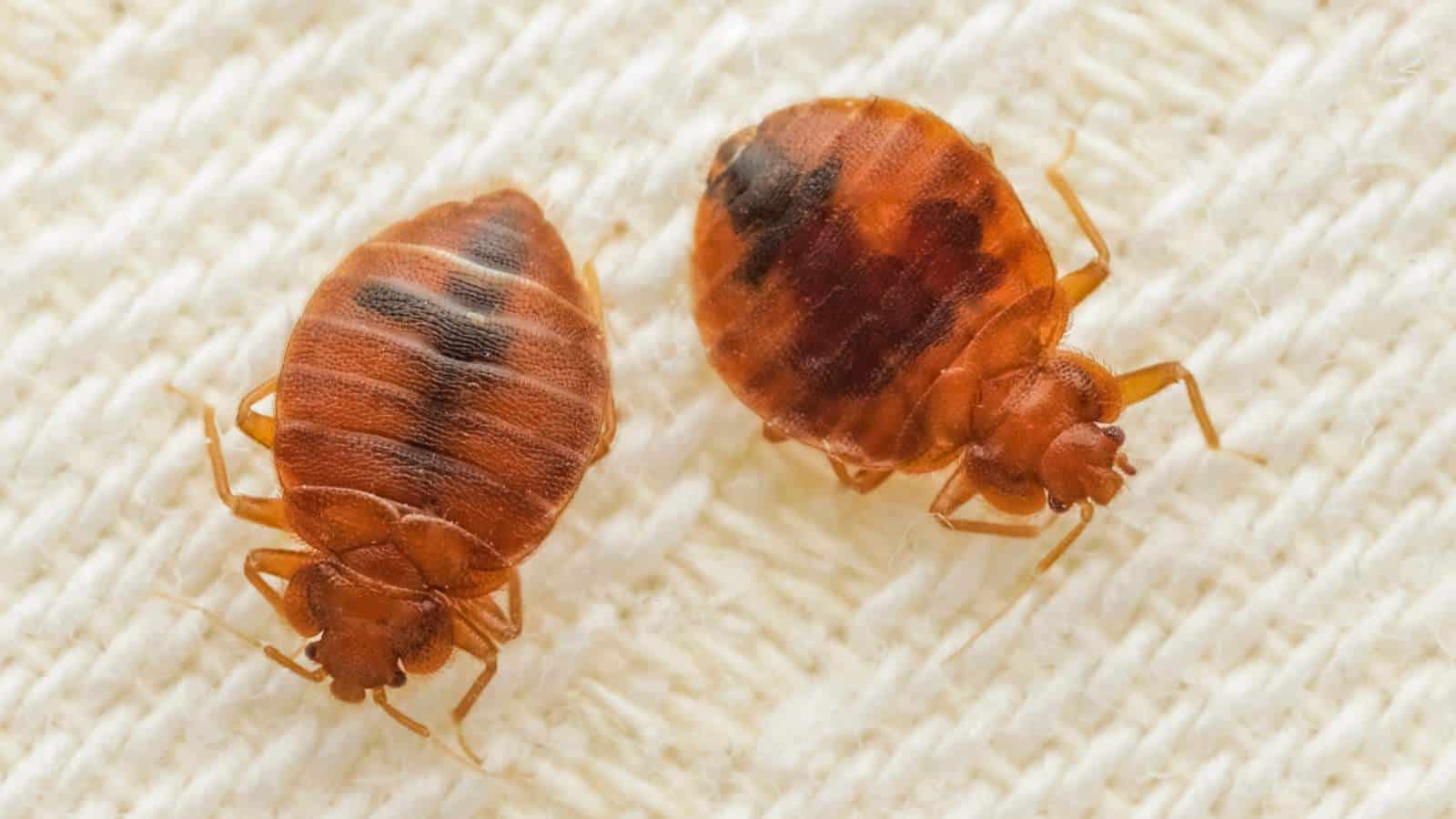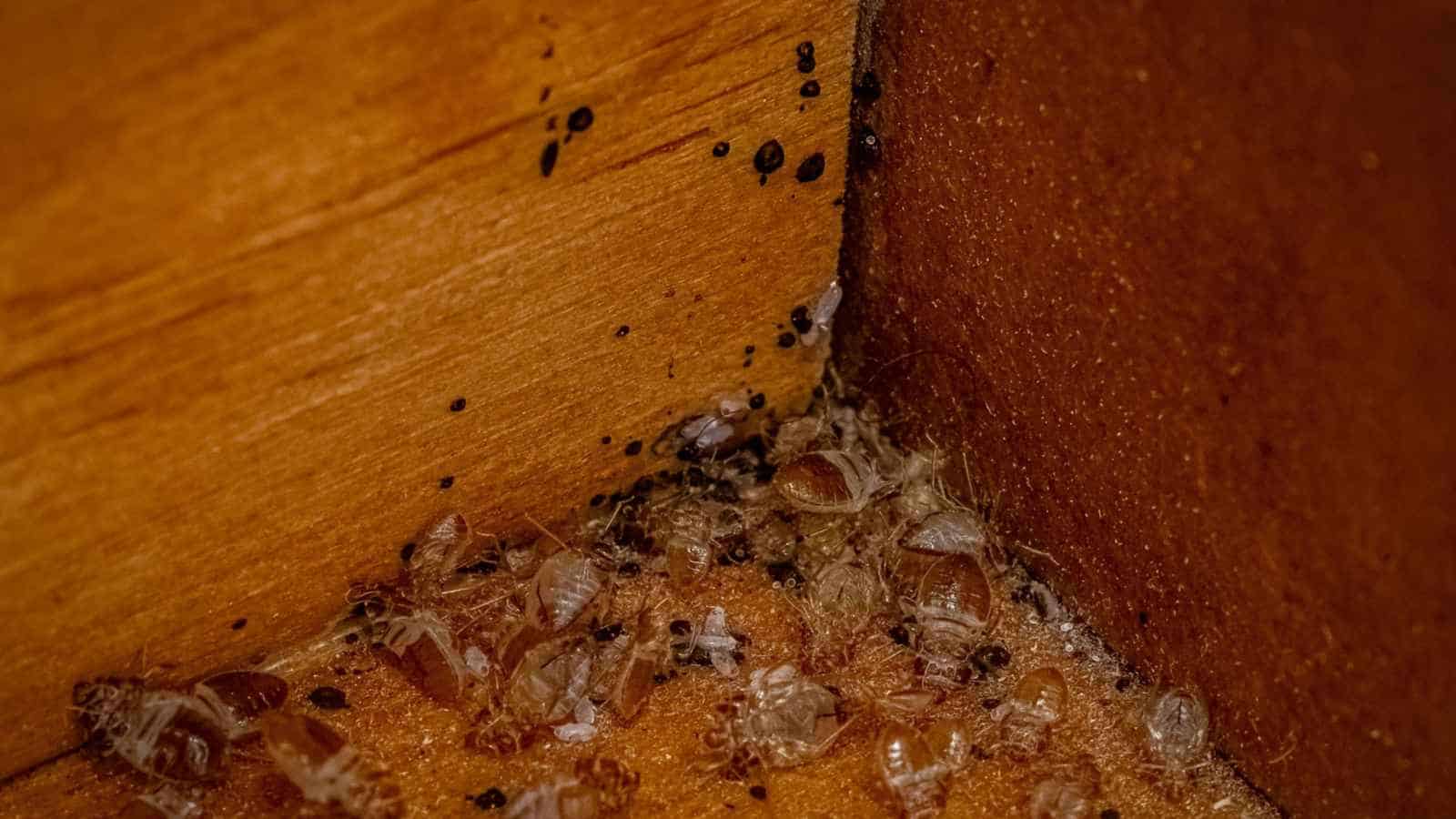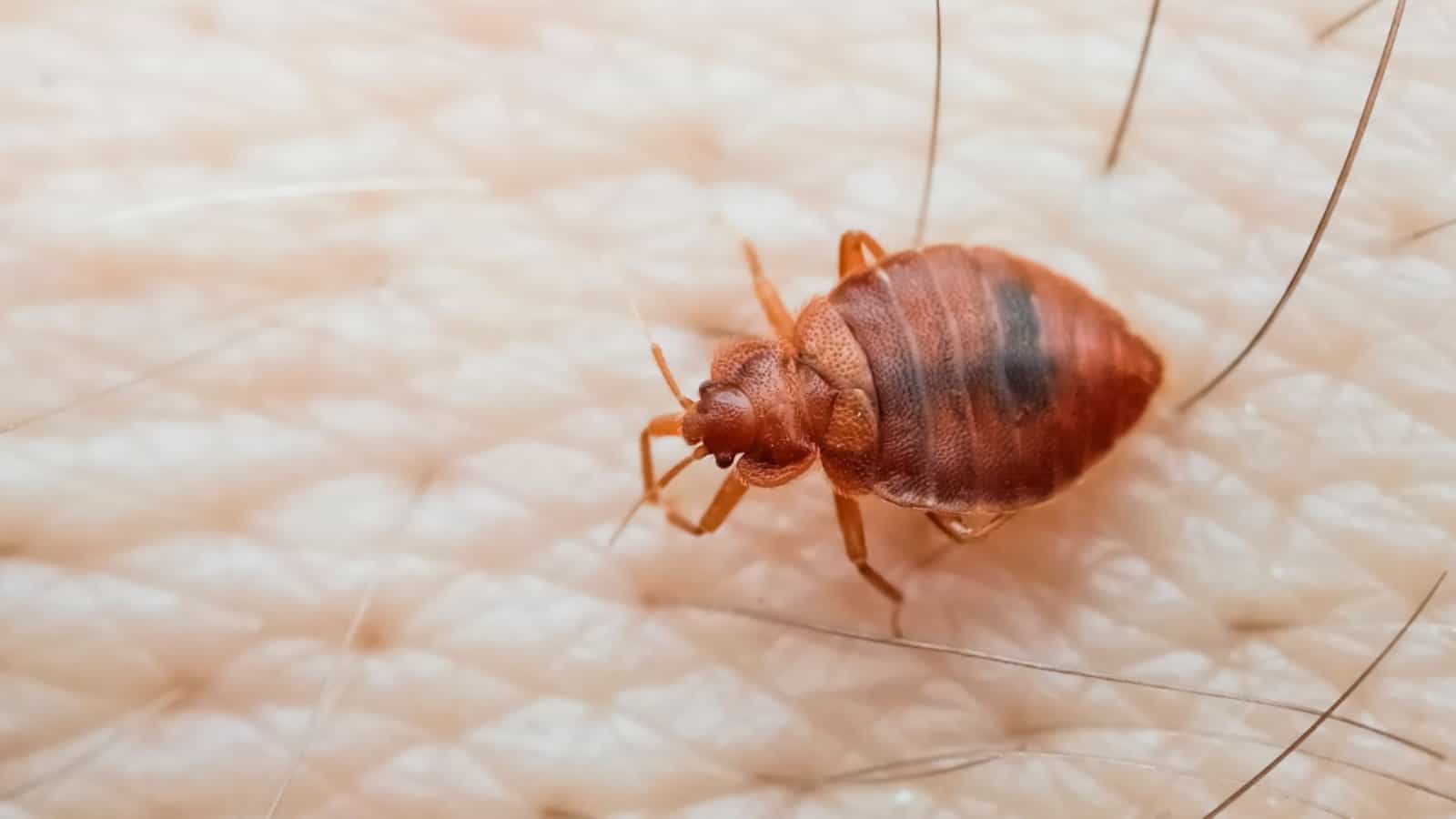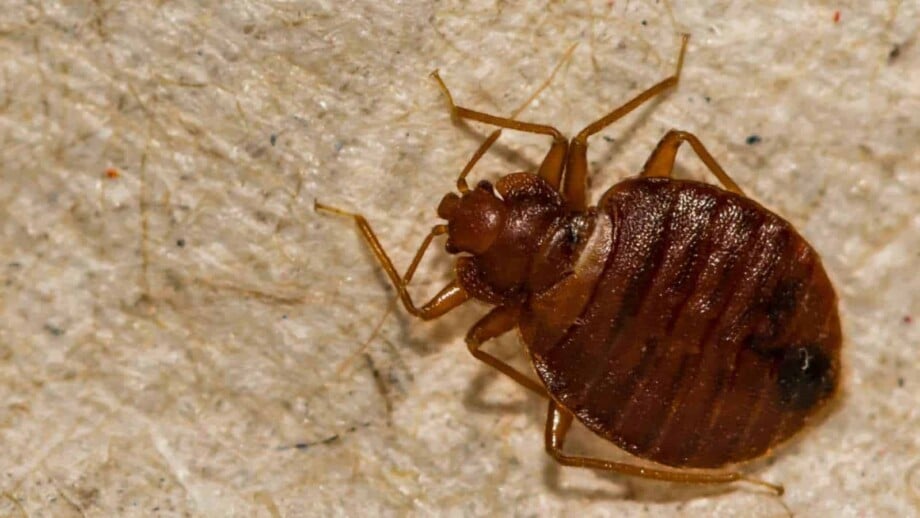If you’ve ever encountered bed bugs, you’re probably wondering what causes bed bugs in the first place.
Bed bugs are small, elusive, and parasitic insects that feed on the blood of humans and animals. These pests are known for their resilience and adaptability, which makes them a significant problem in various settings, including homes, hotels, and other places where people sleep.
The presence of bed bugs is not necessarily related to the cleanliness of the living conditions where they are found. They are excellent hitchhikers, often transported in luggage, clothing, and used furniture, unknowingly brought into homes and businesses by people.
Understanding what causes bed bugs to infest a place is crucial in preventing and controlling their population. It’s essential to realize that anyone can get bed bugs, and their presence does not mean that a place is dirty or unclean.
Bed bugs are simply attracted to their hosts, who they feed on, which can be any human within their reach. However, there are seven main causes of bed bugs that you should be aware of.
In this guide, I’ll go over the main causes of bed bugs and how to minimize risk for each of them.
What are Bed Bugs?
Bed bugs are small, oval-shaped insects that feed on the blood of humans and animals. They are nocturnal pests, meaning they are most active at night. These tiny creatures are about the size of an apple seed, and they have flat bodies that are brown in color. However, after feeding, their bodies swell and turn a reddish color.

Bed bugs cannot fly, but they can move quickly over floors, walls, and ceilings. Female bed bugs may lay hundreds of eggs, each about the size of a speck of dust, over a lifetime.
Immature bed bugs, called nymphs, shed their skins five times before reaching maturity and require a meal of blood before each shedding.
Bed bugs do not transmit diseases, but their bites can lead to skin rashes, allergic symptoms, and psychological effects such as stress, anxiety, and insomnia.
They are known for their stealthy habits; they hide during the day in places like mattress seams, bed frames, and headboards, making them difficult to spot. They then come out at night to feed, often without being detected.
Identifying A Bed Bug Infestation
Identifying a bed bug infestation at the earliest possible stage is crucial to prevent it from escalating into a major problem. Keeping an eye out for the early signs of bed bugs is key to figuring out the top indicators for an infestation.
The first sign of an infestation is often the appearance of small, itchy, red bites on your skin. These bites are typically clustered together and may appear in a line.
Bed bugs are nocturnal creatures, making them difficult to spot. They hide in crevices during the day and come out at night to feed on human blood. However, they leave behind certain tell-tale signs of their presence.

Look for tiny black or brown spots on your bedding, which are their droppings. You may also notice a sweet, musty odor emanating from your bed or furniture, another sign of an infestation.
Another key indicator is the presence of their exoskeletons. Bed bugs shed their skin multiple times as they grow, leaving behind a clear or yellowish shell.
If you notice any of these signs, it’s time to take action and call a professional pest control service to handle the infestation. Remember, early detection is key to preventing a full-blown bed bug crisis.
How are Bed Bugs Transferred?
Bed bugs, small parasitic insects that feed on human blood, are often associated with unclean environments.
However, the truth is that they can infest any place, irrespective of cleanliness levels. They are not a result of poor hygiene; instead, they are excellent hitchhikers, transferring from one place to another with ease.
Bed bugs are typically transferred through human activity. They can latch onto luggage, clothing, bedding, and furniture, making travel a common way for these pests to spread.

If you stay in a hotel or a home infested with bed bugs, there’s a chance you might unknowingly carry some back to your own home.
Second-hand furniture is another common bed bug transfer medium. These insects can survive for months without feeding, so they can live in furniture waiting for a new host.
Personal items like backpacks and purses can also become a transport medium when placed on an infested surface. Even public places like libraries, theaters, and public transport can harbor bed bugs.
Main Causes Of Bed Bug Infestations
Bed bug infestations are a common problem that can cause a lot of discomfort and distress. Understanding the main causes of these infestations can help you prevent them. Let’s look at the 7 causes of bed bugs:
1. Traveling

Traveling can be an exciting experience, but it also presents an opportunity for bed bugs to hitch a ride in your luggage.
These wingless insects are tiny pests that thrive in mattresses, carpets, and even in the folds of your clothes. Their bites may cause itching, rashes, and in severe cases, allergic reactions.
Bed bugs are not just confined to dorm rooms or cruise ships; they are found in various shelters like hotels, hostels, and even public transportation.
They are adept at hiding in small crevices, cracks, and loose wallpaper. They can also be found in box springs, bed frames, and headboards. Therefore, it’s crucial to inspect your luggage and belongings for signs of bedbugs, such as eggs or nymphs, before you unpack.
Prevention is always better than cure. When traveling, inspect hotel rooms for signs of bed bugs, and keep your luggage off the floor and away from the bed. Upon returning home, immediately launder and heat-treat your travel clothing and luggage.
Remember, your body heat and the carbon dioxide you exhale are irresistible to these pests, making you an attractive host. Be vigilant and take precautions to ensure your travels are not marred by these pesky insects.
I recommend our guide on how to check for bed bugs to learn more.
2. Buying Used Furniture

Purchasing used furniture can be an economical and environmentally friendly choice, but it also comes with the risk of bringing pests, particularly bed bugs, into your home.
It’s important to properly inspect any used piece of furniture before bringing it into the house. You should also isolate it for a while before you bring it in next to your other furniture pieces.
Keep an eye out for the early signs of bed bugs if you happen to recently make a second hand purchase; this will help you identify an infestation early on and tackle it more easily.
3. Schools And Colleges

Schools and colleges, particularly dorm rooms, are not immune to bed bug infestations and are one of the main causes of bed bugs in your living space.
Bed bugs can easily hitch a ride on students’ luggage, purses, or even in the folds of their clothes. Once inside, they can quickly spread, hiding in mattresses, box springs, bed frames, headboards, carpets, and clutter.
They can also find refuge in cracks and crevices, such as those found in loose wallpaper and around the seams of a mattress.
Females can lay hundreds of eggs in a lifetime, exacerbating the bedbug infestation. Therefore, prevention is crucial.
4. Other Shared Living Spaces and Public Spaces

Bed bugs are not limited to residential homes. They’re also common in apartment complexes where they travel from one apartment to another.
In multi-unit housing like apartments or condominiums, bed bugs can easily move between units through shared walls, plumbing, and electrical systems.
If your neighbors have a bed bug infestation and do not take appropriate measures to address it, the bugs can migrate into your unit through these common areas.
Another common place to find bed bugs is hospitals and even day care centers. Unfortunately, it takes just one bed bug hitchhiking on your clothes to start infesting your entire house.
Pay attention whenever you and your family visit a public place so avoid any bed bug infestations.
5. Acquiring Infested Belongings

One of the most common ways to experience a bed bug infestation is through acquiring infested belongings.
Bed bugs are excellent at hiding, and they can infest a wide range of items, including clothing, luggage, furniture, and electronics.
When you bring home or acquire items that are already infested with bed bugs, you unknowingly introduce the pests into your living space
Bed bugs can also hide in clothing and linens. If you purchase used clothing, bedding, or even borrow items from friends or family who have a bed bug infestation, the bugs can easily transfer from these items to your home.
And so, if you’re acquiring used furniture or clothing, thoroughly inspect the items for any signs of bed bugs, such as tiny reddish-brown bugs, tiny white eggs, or dark fecal stains.
6. Visitors
Visitors or guests who have traveled recently may have stayed in hotels, motels, or other accommodations where bed bugs are present.
These pests often infest hotel rooms, and when guests check out, they can unknowingly carry bed bugs with them on their clothing or in their luggage.
Plus, guests may bring secondhand items, such as clothing, bedding, or furniture, into your home. If these items are infested with bed bugs, the pests can transfer to your living space.
And even if your visitors don’t bring used items, they may have infested belongings themselves.

For example, if they have bed bugs in their own homes or have recently been in an infested environment, the bed bugs can cling to their clothing or personal items and be transported into your home when they visit.
Encourage open communication with your guests. If they have recently dealt with a bed bug problem or have stayed in an infested place, they should let you know so that precautions can be taken.
If you frequently have overnight guests, consider investing in bed bug-proof mattress and pillow encasements. These encasements can help prevent bed bugs from infesting your bedding.
After your guests leave, inspect the bedding and the room for any signs of bed bugs, such as reddish-brown bugs, tiny white eggs, or dark fecal stains. Launder all bedding, including sheets and pillowcases, in hot water and dry them on high heat.
7. Lack of Awareness
Many individuals are unaware of the signs of bedbugs, leading to an uncontrolled bed bug infestation.
Symptoms of a bedbug infestation include rashes, blisters, itching, and in some cases, an allergic reaction. However, not everyone reacts to bedbug bites, so physical symptoms may not always be present.

This lack of awareness can lead to a lifetime of problems, as female bedbugs can lay hundreds of eggs in their lifetime, all of which feed on their host’s blood.
For prevention, it’s crucial to seal cracks and regularly check for signs of bedbugs. If an infestation is suspected, a professional exterminator or pest control company should be contacted immediately.
How To Get Rid Of A Bedbug Infestation
Early detection is key to dealing with a bed bug infestation. Look for signs of bedbugs like tiny bites, often in a line, and small blood stains or dark spots on your mattress seams or sheets.
You may also spot their tiny, white eggs in the seams of your mattress or in other dark, hidden places. We have a complete guide to bed bug control that discusses the seven steps you can take to control an infestation.
But if you suspect a severe bedbug infestation, it’s crucial to call a professional exterminator or a pest control company. These professionals have the knowledge and tools to effectively eliminate these pests.
Other Bedbug Guides from Planet Natural:
Complete Guide to Bed Bug Traps (+ 3 Best Ones in 2023!)
Baby Bed Bugs: How to Identify & Get Rid of Them + Photos & FAQ
What Do Bed Bug Eggs Look Like? Complete Guide with Pictures
How to Check for Bed Bugs (Guide for Home and Travel)
Where Do Bed Bugs Come From? And What Attracts Them?











